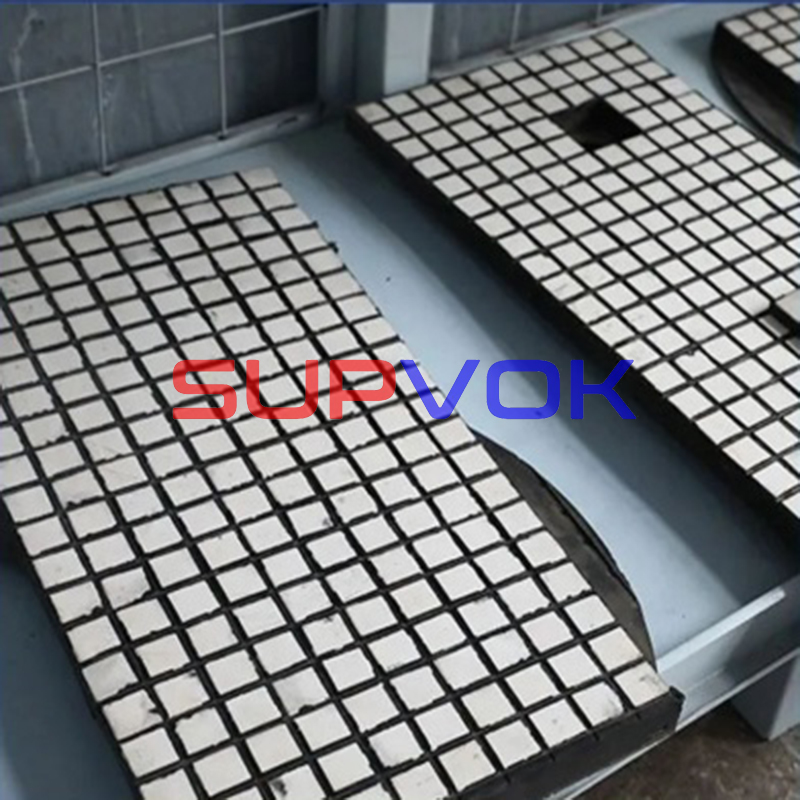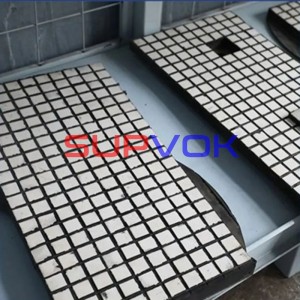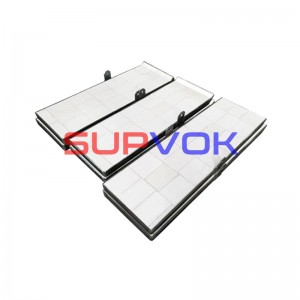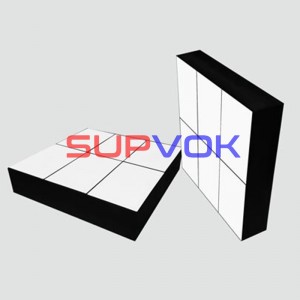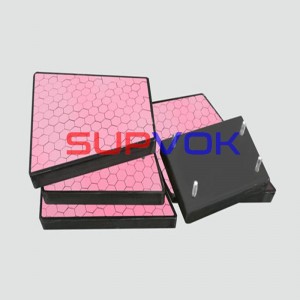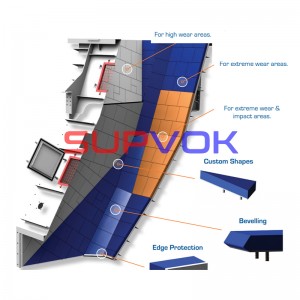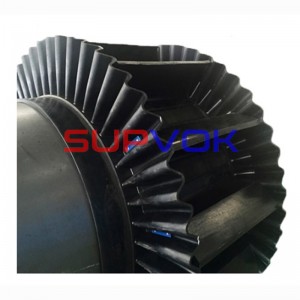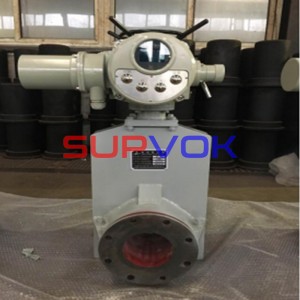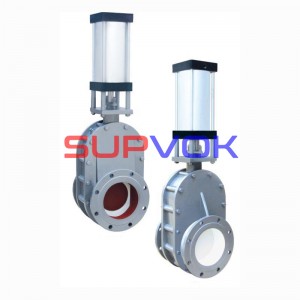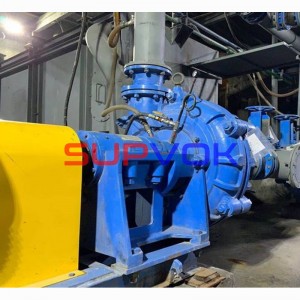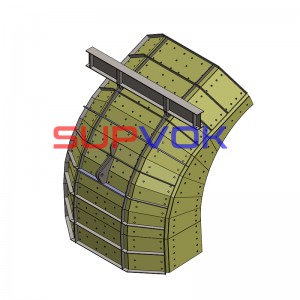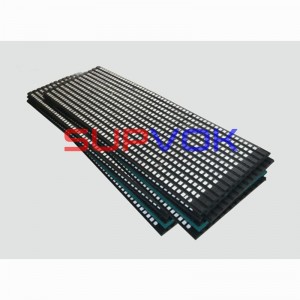ZTA Ceramic Plates, ZTA+Rubber+Metal
Wear-resistant ceramic lining plate
Alumina, silicon carbide and zirconia ceramics are used as wear resistant layers.
Auxiliary metal layers and rubber layers are used as buffers.
Common types
Rubber composite ceramic lining plate
Metal composite ceramic lining plate
Type of ceramic layer
Alumina ceramics, silicon carbide ceramics, zirconia ceramics, ZTA ceramics
Applications of wear-resistant ceramic lining plate
wear-resistant ceramic lining plate is a kind of wear-resistant material for material conveying equipment or liquid flowing through the surface of pipelines in petroleum, mining, steel plants, power plants and other industries. The main function is to effectively resist the impact of materials on the pipe wall, the corrosion of chemical substances and the thermal impact of materials. At the same time, it can reduce the wear of equipment components, thus greatly reducing the cost of frequent maintenance and extending the service life of equipment. Therefore, it is a good choice for industrial wear-resistant, impact resistant and corrosion resistant materials.
Characteristics of wear-resistant ceramic lining plate
Wear-resistant ceramic lining plate has the characteristics of wear resistance, impact resistance, corrosion resistance, high temperature resistance and convenient construction. It is an ideal wear-resistant material for the surface of conveying equipment of materials (such as ash, pulverized coal, mineral powder, tailings, cement, etc.) in the power, metallurgy, coal, petroleum, cement, chemical industry, machinery and other industries. It is very safe and reliable in applications which are under the circumstances of high temperature corrosion and high temperature wear. Its service life is ten to twenty times higher than that of cast stone, wear-resistant alloy cast steel, steel plastic, steel rubber and other materials.
The installation of wear-resistant ceramic lining plate is divided into welding and bonding. Depending on the specific construction environment, the two installation method can be selected. Welding is generally used under the working condition with large impact force. However, bonding can be influenced by adhesive. Its temperature cannot exceed 300 ℃.
KSINO only adopts the qualified raw materials. Our wear-resistant ceramic lining plates are fired in tunnel kilns. With stable kiln temperature, the fired ceramic lining plate has uniform color and jade texture. From the appearance, the product surface is neat without adhesion or black spot, as the content of impurities in high-quality raw powder is small. It can pass the ASTM65 test.
There are many wear-resistant ceramic liner molds. Through years’ accumulation, KSINO has hundreds’ sets of molds for clients to choose. The product sorting is strict. We will do what we say and not make false promises.
KSINO has many years of experience in the construction of wear-resistant ceramic lining plates and professional technicians. We can provide technical guidance and identification method for installing wear-resistant ceramic liner.
A.Qualified products
The good wear-resistant ceramic lining plate has a flat surface, no black spots. It is smooth without roughness. In addition, it has even color. The shape of the iron distribution bowl of the welded wear-resistant ceramic lining plate is consistent with the inner hole of the lining plate. The minimum weight is not less than 5g.
B.Density measurement
The alumina content can be calculated by measuring the density.
C. Abrasion test
It is to use a sandblasting machine to measure within 60 minutes at a pressure of 40 kg/cm3, a distance of 50 mm, a spraying angle of 45 degrees.
Applications of wear resistant ceramic lining plate
1.Steel industry
Feeding system: bucket wheel, hopper, silo, belt conveyor apron, trolley three-way bucket, receiving hopper
mixing system: mixing silo, primary mixing cylinder, secondary mixing cylinder, mixing disk, mixing cylinder scraper, pelletizing disk
Sintering system: Beneficiation hopper under vibrating screen, raw material transport chute, cyclone dust collector and pipeline, fan impeller
2. Cement industry
Limestone crushing system and raw fuel pre homogenization system: chute, hopper, belt pulley
Raw mill system: deflector blade of powder concentrator, cone of powder concentrator, pipe from vertical mill to cyclone, cyclone, fuel mill (steel ball mill), shell of powder concentrator, inner cone, and pulverized coal pipe
Fuel mill (steel ball mill): shell of powder concentrator, inner cone, pulverized coal pipe, pulverized coal return pipe
3. Port industry
Fixed hopper for berth, fixed hopper for bucket wheel, fixed hopper for belt conveyor transfer station, hopper for ship unloader
4. Smelting industry
Feeding system: head chute, silo (middle silo, tail silo), vibrating screen trough, coke hopper, metering hopper
Mixing system: batching hopper, primary (secondary) mixer
Baking system: single bin pump calcining pipe, batching hopper, ash hopper, intermediate bin hopper
5. Chemical industry
Feeding system: hopper, silo
Dedusting system: dedusting pipe, elbow, fan casing and impeller, cyclone
6. Coal industry
Coal handling system: chute, hopper, silo
Coal washing system: pressurized cyclone, non pressure three product heavy medium cyclone, non pressure four product heavy medium cyclone, concentration cyclone group
Feeding system: elbow, pipe, hopper, bin, distribution port
7. Mining industry
Feeding system: hopper





